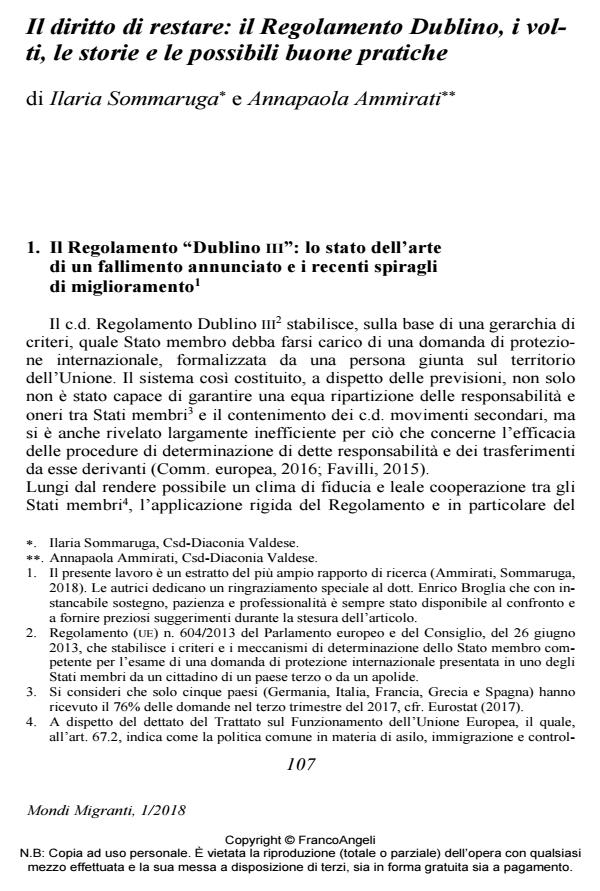The right to stay: the Dublin regulation, faces, stories and possible good practices
Journal title MONDI MIGRANTI
Author/s Ilaria Sommaruga, Annapaola Ammirati
Publishing Year 2018 Issue 2018/1
Language Italian Pages 20 P. 107-126 File size 210 KB
DOI 10.3280/MM2018-001006
DOI is like a bar code for intellectual property: to have more infomation
click here
Below, you can see the article first page
If you want to buy this article in PDF format, you can do it, following the instructions to buy download credits

FrancoAngeli is member of Publishers International Linking Association, Inc (PILA), a not-for-profit association which run the CrossRef service enabling links to and from online scholarly content.
The authors point out how the "Dublin system" has already had the opportunity to demonstrate its ineffectiveness and how the system has not been able to create a climate of cooperation among the EU states, but rather a substantial pressure on countries traditionally of first entry, like Italy and Greece. This work is primarily aimed at examining the proposals, currently under discussion, for the reform of the Dublin Regulation and the whole system, highlighting the underlying political positions and, through the analysis of case studies, high-lighting the human costs of these choices, with reference to the deleterious and precarious effects that the system has on the persons subject to the application of the Regulation. Through the analysis of case studies, on the basis of what is reported in the literature and by direct experience, the authors conclude showing how the Italian international protection system presents a great deal of randomness for applicants and protection holders.
Keywords: Dublin Regulation; European reforms; Access to the reception; Access to the protection procedure; Country of first entry; Asylum seekers.
- Il diritto di restare: il Regolamento Dublino, i volti, le storie e le possibili buone pratiche Ilaria Sommaruga, Annapaola Ammirati, in MONDI MIGRANTI 1/2018 pp.107
DOI: 10.3280/MM2018-001006
Ilaria Sommaruga, Annapaola Ammirati, Il diritto di restare: il Regolamento Dublino, i volti, le storie e le possibili buone pratiche in "MONDI MIGRANTI" 1/2018, pp 107-126, DOI: 10.3280/MM2018-001006